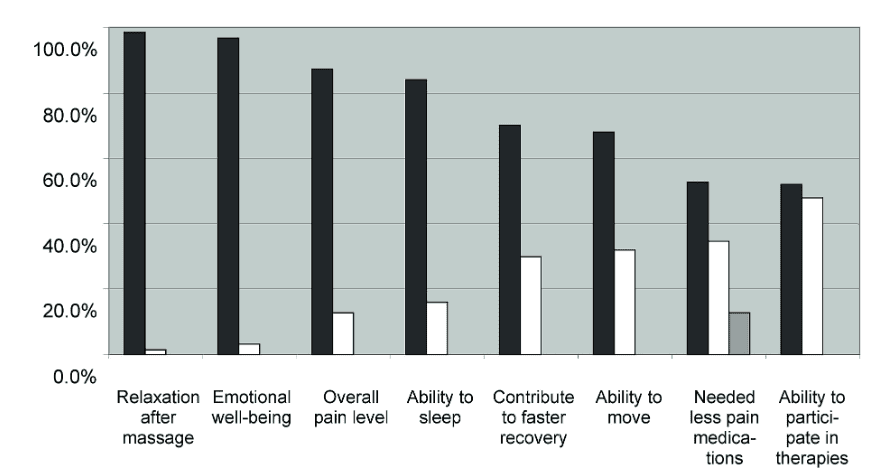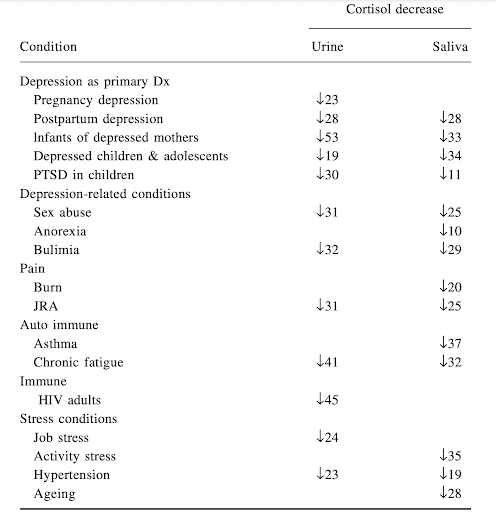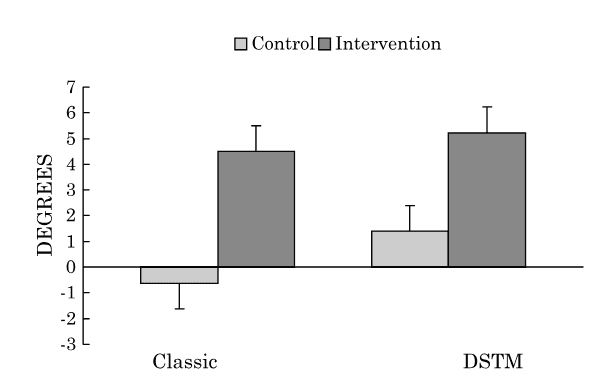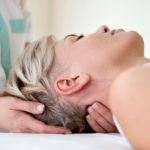
Margaux Loyer
Diploma in Beauty and Massage Therapy, Certificates in Deep Tissue and Myofascial Release, RYT 200 Yoga Teacher, Bachelor of Health Science in Acupuncture
- pain relief
- better circulation
- flexibility
- stress reduction
- sleep quality
This article delves into these biological mechanisms, elucidating how massage therapy enhances mood and promotes well-being.
Health Benefits of Massage
The power of touch should not be underestimated. Touch is essential to our development as infants, and skin-to-skin contact supports brain development and promotes our overall well-being.[1]
This idea was profoundly illustrated by Harlow’s study on the “nature of love” which demonstrated the importance of real tactile comfort over a mother surrogate made of wire, and another covered in cloth to simulate comfort.[1]
In the study, infant monkeys were given the choice between two artificial “mothers” — one made of bare wire that provided food and one covered in soft cloth that offered no nourishment.
Touch is essential to our development as infants
The monkeys consistently chose the cloth-covered surrogate, spending most of their time clinging to it, even though it did not provide food. This showed that the need for comfort and physical touch was more crucial for emotional and psychological development than even the basic need for food.[1]
Even as adults, touch benefits our mental health. Massage can stimulate our parasympathetic nervous system and decrease stress hormones such as cortisol and adrenaline.
Pain Relief
Gate Control Theory, proposed by Ronald Melzack and Patrick Wall in 1965, suggests that pain perception is modulated by nerve fibers and psychological factors.
The spinal cord acts as a “gate”, either blocking or allowing pain signals to the brain. Large nerve fibers close the gate, reducing pain, while small nerve fibers open it, increasing pain.
A study conducted at Flagstaff Medical Center by Adams et al. demonstrated the effectiveness of massage therapy in reducing pain levels in hospital inpatients.
The research involved 53 participants who received 30-minute massage sessions during their hospital stay. The study found that the mean pain level dropped significantly from 5.18 to 2.33 on a visual analog scale after massage therapy.
The results show that massage achieved pain reduction but also had a positive effect on
- emotional well-being
- relaxation
- sleep quality[1]

The pain relief effect of massage therapy can also be explained through the release of Oxytocin which has analgesic effects and increases pain threshold, as well as the activation of the PNS, the decrease of cortisol which decreases inflammation in the body.
How massage increases Oxytocin levels
A study with 95 participants confirmed that massage boosts oxytocin levels while decreasing stress hormones like adrenocorticotropin.
Blood samples showed increased oxytocin and reduced cortisol after a 15-minute moderate-pressure back massage.[3]

Effects of Oxytocin and its numerous health benefits
Uvnäs-Moberg and Petersson’s findings reveal that oxytocin
- lowers blood pressure
- decreases cortisol levels
- increases pain thresholds
- fosters feelings of calm and security
Additionally, oxytocin enhances empathy, trust, and social connection, which are essential for mental health.[4]
Mood Enhancement and Stress Reduction
Massage has a powerful effect on mood, stress and anxiety by promoting a sense of relaxation and well-being through the release of oxytocin.[4]
Moreover, these positive changes have been observed in biochemistry with increases in serotonin and dopamine levels as well as a decrease in cortisol (stress hormone), following massage therapy.
The study measured cortisol levels before and after massage therapy sessions using saliva samples. The results showed a significant decrease in cortisol levels of 31% in the massage group compared to the baseline measurements.[5]
Massage decreases cortisol levels

In the same, neurotransmitters were measured in urine and reported an average increase of 28% in serotonin and 31% in dopamine after massage therapy.[1]

The results indicate that massage therapy lowers cortisol, reducing stress and promoting the release of mood-enhancing neurotransmitters such as dopamine and serotonin.
This leads to increased pleasure, motivation, and improved mood regulation, benefiting various medical conditions and stressful experiences.
RELATED — Introduction to: Depression
Improved Blood Flow and Circulation
Poor circulation can cause various discomforts, such as swelling in the extremities, cold hands and feet, fatigue, and muscle achiness due to lactic acid buildup.
Conversely, good circulation aids in providing oxygen-rich blood to help heal damaged muscles.
Massage helps improve circulation by applying mechanical pressure to move blood, assist with venous return, and enhance lymph circulation, which carries away metabolic waste from muscles and organs.
Additionally, massage techniques help eliminate lactic acid from the muscles and support the flow of lymph. These mechanisms help remove accumulated fluids from the tissues, allowing new blood to flow in and promoting healing.
It has been suggested that by increasing oxygenated blood flow to muscles, tendons, and fascia, while clearing waste through improved lymph circulation, these mechanisms aid in muscle recovery.
A study from 2004 using Laser Doppler flowmetry, a non-invasive technique that measures blood flow in microvascular tissues, found that post-exercise massage helped reduce muscle fatigue by increasing oxygenated blood flow and facilitating lymphatic drainage, which aids in clearing out accumulated fluids and waste from the tissues.
This aligns with the understanding that improved circulation through massage can promote healing and recovery, making it a valuable tool for athletes and those experiencing poor circulation.[6]
Enhanced Flexibility and Range of Motion
While more research is needed, sports massage has shown significant benefits in flexibility and joint mobility.
A 2005 study found that two specific massage techniques significantly increased hamstring muscle length in competitive female hockey players, highlighting the effectiveness of targeted massage therapy in enhancing flexibility.

Techniques like petrissage increase the flexibility of the muscle by twisting the area between the muscle and the skin after holding the soft tissue; and friction increases soft tissue temperature, helping lengthen muscles and loosen fascia.
These techniques smooth scar tissue and loosen deep adhesions in the tendons, ligaments, and joint capsules.[7]
Improved Sleep Quality
Research shows that massage improves sleep by
- restoring the PNS
- decreasing cortisol levels
- reducing stress and alertness
which in turn makes you feel more relaxed, reduces muscle tension and pain, and improves sleep quality.[8]
Additionally, massage increases the production of serotonin, which is then converted into melatonin, the hormone that regulates sleep.[9]
RELATED — Why we sleep: The role of sleep in our healthy life
The 2023 study demonstrated that gentle massage stimulation significantly boosts melatonin levels in preterm infants through enhanced vagal activity.
By applying gentle massage, the researchers were able to activate the vagus nerve, leading to improved melatonin production, which is crucial for sleep regulation and overall development in preterm infants.[10]
Massage can assist in production of melatonin
Further evidence comes from a 2016 study on hospitalised adolescents with cancer. Their findings showed a significant increase in sleep duration among those receiving massage therapy, with an increase of 53 minutes (from 391 to 444 minutes).[11]
References
(1) Harlow, H. F. (1958). The nature of love. American Psychologist, 13(12), 673-685. Available from: https://users.sussex.ac.uk/~grahamh/RM1web/Classic%20papers/Harlow1958.pdf
(2) Adams, R., White, B., & Beckett, C. (2010). The effects of massage therapy on pain management in the acute care setting. International Journal of Therapeutic Massage & Bodywork. Available from: https://www.ncbi.nlm.nih.gov/pmc/articles/PMC3091428/pdf/ijtmb-3-1-4.pdf
(3) Morhenn, V., Beavin, L. E., & Zak, P. J. (2012). Massage increases oxytocin and reduces adrenocorticotropin hormone in humans. Alternative Therapies in Health and Medicine. Available from: https://todayspractitioner.com/wp-content/uploads/2013/10/Massage-Increases-Oxytocin-and-Reduces-Adrenocorticotropin-Hormone-in-Humans-ATHM_18_6_p11_18Morhenn1.pdf
(4) Uvnas-Moberg, K., & Petersson, M. (2005). Oxytocin, ein Vermittler von Antistress, Wohlbefinden, sozialer Interaktion, Wachstum und Heilung. Zeitschrift für Psychosomatische Medizin und Psychotherapie.
(5) Field, T., Hernandez-Reif, M., Diego, M., Schanberg, S., & Kuhn, C. (2005). Cortisol decreases and serotonin and dopamine increase following massage therapy. International Journal of Neuroscience. Available from: https://sci-hub.se/https://doi.org/10.1080/00207450590956459
(6) Mori, H., Ohsawa, H., Tanaka, T. H., & Taniwaki, E. (2004). Effect of massage on blood flow and muscle fatigue following isometric lumbar exercise. Medical Science Monitor: International Medical Journal of Experimental and Clinical Research.
(7) Hopper, D., Conneely, M., Chromiak, F., et al. (2005). Evaluation of the effect of two massage techniques on hamstring muscle length in competitive female hockey players. Physical Therapy in Sport. Available from: https://sci-hub.se/10.1016/j.ptsp.2005.04.003
(8) Diego, M. A., & Field, T. (2009). Moderate pressure massage elicits a parasympathetic nervous system response. International Journal of Neuroscience. Available from: https://sci-hub.se/https://doi.org/10.1080/00207450802329605
(9) Lee, B. H., Hille, B., & Koh, D. S. (2021). Serotonin modulates melatonin synthesis as an autocrine neurotransmitter in the pineal gland. Proceedings of the National Academy of Sciences of the United States of America. Available from: https://www.pnas.org/doi/epub/10.1073/pnas.2113852118
(10) Budiarti, D., & Suryawan, A. (2023). Massage stimulation’s effect on melatonin levels in preterm infants via vagal activity. Bali Medical Journal. Available from: https://pdfs.semanticscholar.org/7c65/91951bceb67f2c04c3705df322b901d07687.pdf
(11) Jacobs, S., Mowbray, C., Cates, L. M., Baylor, A., Gable, C., Skora, E., … Hinds, P. (2016). Pilot study of massage to improve sleep and fatigue in hospitalized adolescents with cancer. Pediatric Blood & Cancer.






